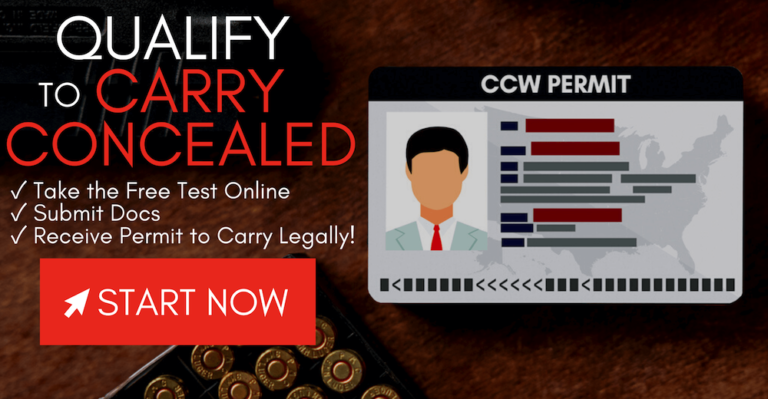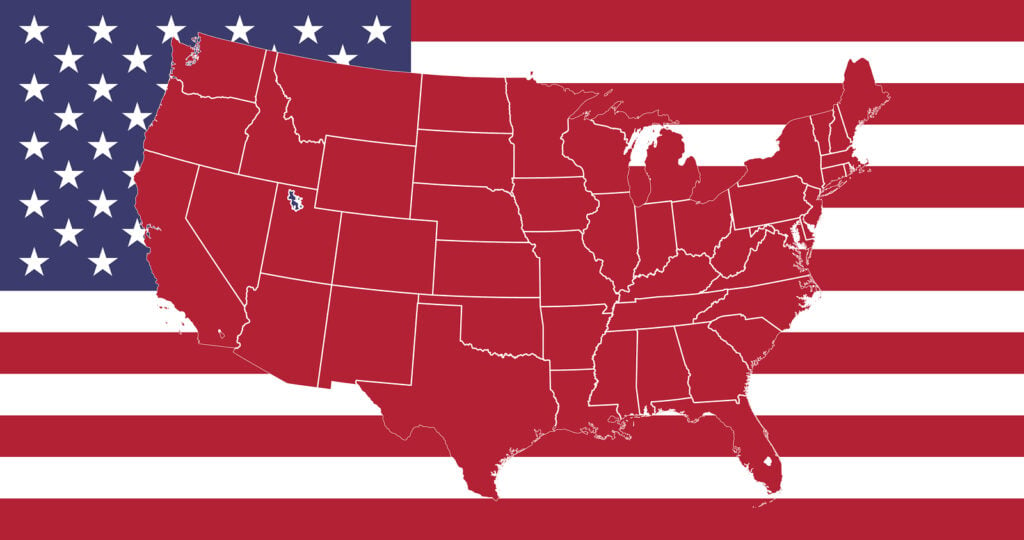If you’re actively working on improving your firearm handling skills, you may be wondering — does dry fire training help for concealed carry?
Yes—dry fire training is one of the most effective and accessible methods to improve your concealed carry skills. It allows you to practice nearly every essential firearm handling technique without live ammunition, building muscle memory, refining accuracy, and boosting confidence in a safe and controlled environment.
As Austin Davis, National Director of Training at Concealed Coalition, puts it:
“Almost everything you can practice with a firearm except for a couple of skills can be done with dry fire.”
Dry fire training is an essential supplement to live fire practice. In this article, you’ll learn what dry fire training is, how it helps concealed carriers, safety guidelines, key drills, and how to take your training to the next level with Concealed Coalition University.
What is Dry Fire Training?
Dry fire training involves handling and operating a firearm without using live ammunition. By “firing” with an empty chamber, you can practice essential skills such as trigger control, sight alignment, and drawing from concealment.
This method eliminates the noise, recoil, and expense associated with live rounds, making it an efficient and cost-effective way to improve your shooting technique.
While dry fire training is not a substitute for live fire practice, it serves as a valuable complement. Its convenience allows you to train anytime, anywhere, helping to build muscle memory and refine your skills.
Why Dry Fire Training is Crucial for Concealed Carry
When it comes to personal defense, every second matters. Dry fire training is a vital practice that sharpens your preparedness by focusing on four key areas:
- Developing Muscle Memory – Repeatedly practicing safe draws, sight alignment, and trigger control ensures your actions become second nature, even in high-stress situations. Precision and consistency start here.
- Enhancing Safety – Without live ammunition, you can fully concentrate on mastering proper gun handling techniques. This reduces risk and builds habits grounded in safety.
- Saving Time and Money – Range visits and ammunition costs can be limiting. Dry fire training offers a cost-effective, convenient way to practice from the comfort of home.
- Boosting Confidence – Regular practice not only refines your skills but also builds confidence in your ability to handle your firearm. Familiarity leads to control, empowering you to respond effectively when it matters most.
Dry fire training is an invaluable tool for concealed carry, making you safer, more skilled, and better prepared.
Safety First: Essential Rules for Every Dry Fire Session
Before beginning any dry fire practice, always adhere to these critical safety protocols to ensure a secure training environment:
- Keep live ammunition out of the training area – Store all live rounds in a completely separate room to eliminate any chance of accidental discharge.
- Verify your firearm is unloaded – Conduct both a physical and visual inspection to confirm the firearm is empty. Make it a habit to repeat this check every time you practice.
- Always establish a safe direction – Ensure the muzzle is pointed in a direction where an unintended discharge would cause no harm or damage.
- Minimize distractions – Turn off your phone, silence notifications, and eliminate background noise to fully focus on your training.
Safety is non-negotiable—prioritize it every time you practice.
How Does Dry Fire Training Help for Concealed Carry Skills
Incorporating dry fire practice into your concealed carry routine offers a range of benefits that can significantly improve your proficiency. Here’s why it’s such an effective training method:
1. Mastering the Draw from Concealment
Dry fire allows you to practice clearing your clothing, establishing a proper firing grip, and presenting your firearm with speed and safety—all essential for real-world scenarios.
2. Perfecting Trigger Control
Smoothly pressing the trigger without disrupting your sight alignment is a crucial skill. Dry fire practice helps you refine this technique without the distractions of recoil.
3. Improving Sight Alignment and Picture
Practicing sight acquisition at home builds the muscle memory needed to get on target faster when you’re at the range.
4. Sharpening Reloads and Malfunction Drills
Dry fire is an excellent way to rehearse magazine changes, clear jams, and maintain a high level of operational readiness.
By dedicating time to dry fire practice, you can build confidence, improve efficiency, and enhance your overall concealed carry skills.
Essential Dry Fire Drills for Concealed Carry
These drills require no ammunition, but can dramatically enhance your performance:
Perfect Trigger Press / Wall Drill
The Perfect Trigger Press or Wall Drill helps you develop a smooth and controlled trigger press without disturbing your sight alignment.
Start by standing close to a blank wall with your unloaded firearm. Focus entirely on your front sight while pressing the trigger slowly and steadily. The goal is to ensure the sight doesn’t move as you press the trigger.
Repeat this exercise multiple times until you can press the trigger smoothly without any sight movement. This drill is essential for improving accuracy and control, making it a foundational practice in firearm training.
Coin (Dime) Drill
The Coin Drill is an excellent way to improve trigger control and minimize unnecessary movement. Place a small coin, like a dime, on the front sight or slide of your unloaded firearm. The objective is to press the trigger without causing the coin to fall off, which requires steady hands and controlled movements.
Repeat this drill several times to build consistency and precision. It’s a simple yet effective way to measure your progress in maintaining balance and focus during the trigger press, ensuring your shooting fundamentals are strong.
Draw & Fire Drill
The Draw & Fire Drill is designed to improve your speed and accuracy when drawing from a holster. Start by holstering your unloaded firearm. On a signal, quickly draw your firearm, align the sights, and press the trigger while maintaining proper form and control.
Reholster after each repetition and practice until your movements are smooth and instinctive. This drill helps develop muscle memory and reaction time, making it a critical skill for situations that require rapid and accurate responses.
Reload Drill
The Reload Drill enhances your ability to quickly and efficiently reload your firearm. Use dummy rounds to simulate an empty magazine. Begin by dropping the empty mag, inserting a fresh one, and reacquiring your sight picture in a smooth and controlled motion.
Practice this drill repeatedly to build speed and confidence in handling reloads under pressure. It’s an essential skill for ensuring you can stay focused on your target while maintaining your firearm’s readiness in any scenario.
Training Tools That Enhance Dry Fire
Training with your firearm alone is beneficial, but incorporating additional tools can significantly enhance your sessions.
For instance, snap caps or dummy rounds protect your firing pin while enabling malfunction drills, making your practice safer and more realistic. Laser training systems provide immediate visual feedback on shot placement, helping you refine accuracy and technique with precision.
To further track progress, shot timer apps measure your draw and split times, offering valuable data to improve speed and efficiency. Specialized dry fire targets also make practice more engaging by simulating realistic scenarios.
The Limitations of Dry Fire Training
Dry fire practice is an excellent way to develop technical shooting skills, such as trigger control and sight alignment.
However, it cannot fully replicate the experience of managing recoil or the stress encountered during live-fire scenarios. While dry fire is a valuable component of training, it has its limitations.
To achieve a well-rounded skill set, it is essential to pair dry fire practice with regular live-fire sessions. Live fire provides the opportunity to refine recoil management and build confidence under real-world conditions, ultimately completing your overall training regimen.
How to Take Your Training to the Next Level with Concealed Coalition
Dry fire training is powerful—but to truly master concealed carry, you need expert guidance. Concealed Coalition offers:
- State-Specific Concealed Carry Training – Learn laws, safety, and defensive skills tailored to your state.
- Concealed Coalition University – A monthly subscription with video lessons covering home defense, concealed carry tactics, and ongoing skill development.
- The Protector’s Playbook by Austin Davis – A comprehensive guide to mastering home and family defense.
These resources ensure you don’t just practice—you practice correctly.
Video: Expert Insights on Dry Fire Training
Explore the art of dry fire training with this comprehensive Concealed Coalition video:
Final Thoughts
So… does dry fire training help for concealed carry?
Dry fire training is an essential practice for every concealed carrier. It helps you build muscle memory, sharpen your technique, and reinforce critical safety habits—all without using live ammunition.
When you pair regular dry fire drills with live fire range sessions and professional training from Concealed Coalition, you’ll be better equipped to protect yourself and your loved ones should the need ever arise.
As the saying goes, “Almost everything you can practice with a firearm, except for a few specific skills, can be done with dry fire.” Make it a consistent part of your training routine, stay committed, and always prioritize safety above all else.




